Search Result
Results for "
brown
" in MedChemExpress (MCE) Product Catalog:
1
Biochemical Assay Reagents
7
Isotope-Labeled Compounds
| Cat. No. |
Product Name |
Target |
Research Areas |
Chemical Structure |
-
- HY-D0326
-
-
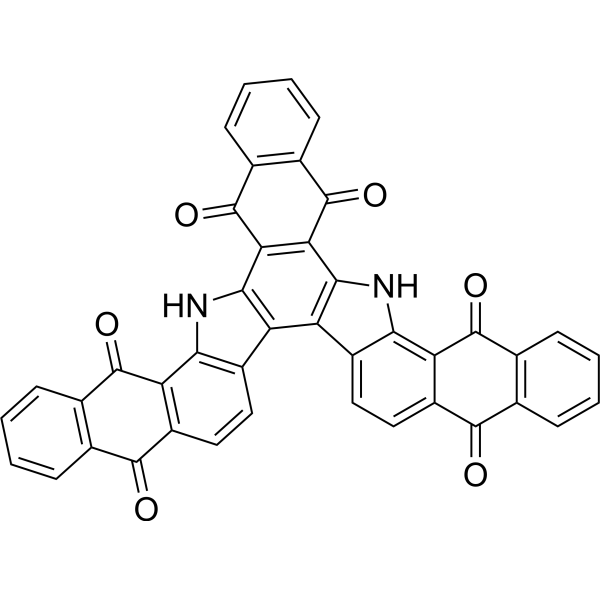
-
- HY-D1203
-
|
|
Fluorescent Dye
|
|
|
Acid Brown 4 is a brown dye whose staining effects can be removed by the electrocoagulation (EC) process.
|
-
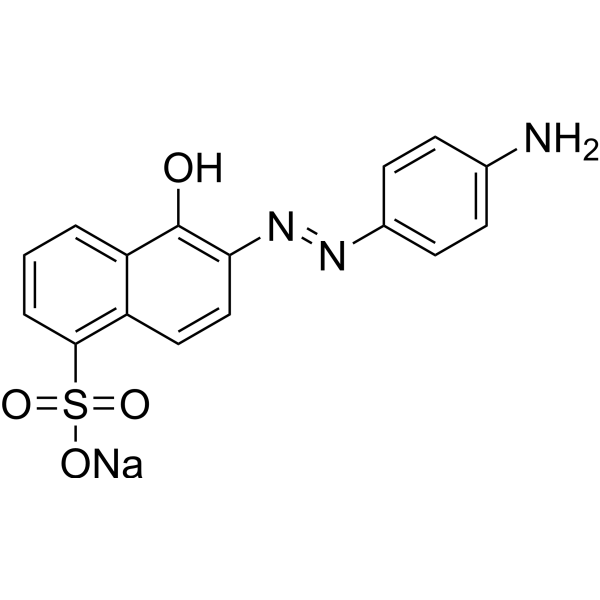
-
- HY-D0659
-
|
|
Fluorescent Dye
|
|
|
Acid brown 58 is a brown dye whose staining effects can be removed by the electrocoagulation (EC) process.
|
-
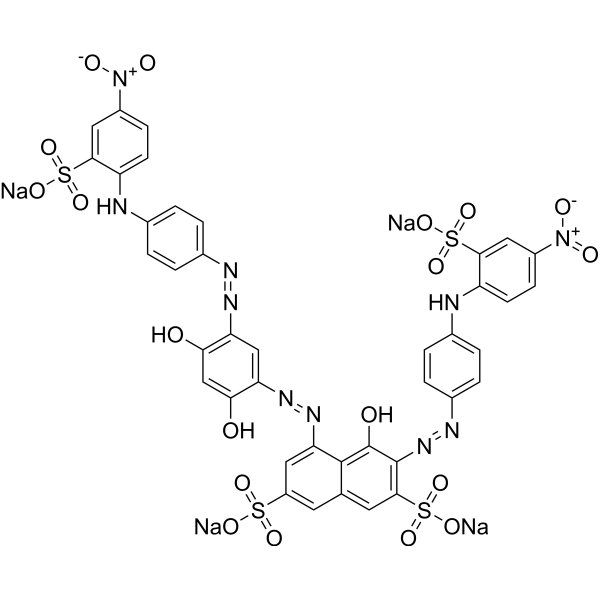
-
- HY-D0388
-
|
|
Fluorescent Dye
|
|
|
Acid Brown 5 is a brown dye whose staining effects can be removed by the electrocoagulation (EC) process.
|
-

-
- HY-D0528
-
|
|
Fluorescent Dye
|
|
|
Disperse brown 1 is a brown dye commonly used for fiber dyeing.
|
-
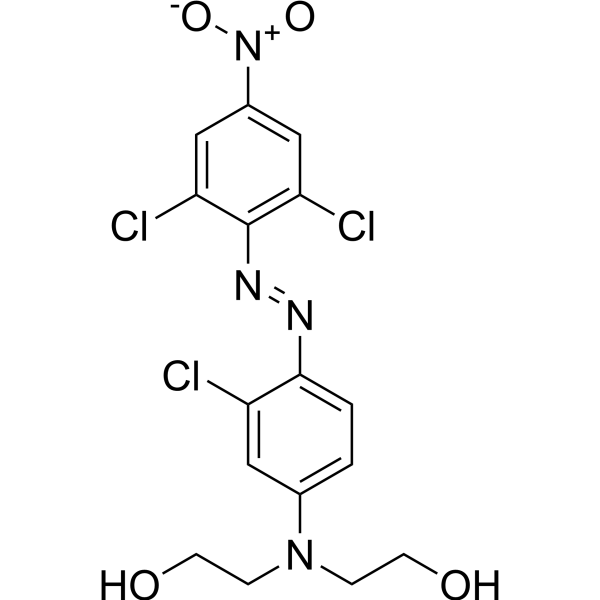
-
- HY-D0517
-
|
|
Fluorescent Dye
|
|
|
Disperse brown 4 is a brown dye commonly used for fiber dyeing.
|
-
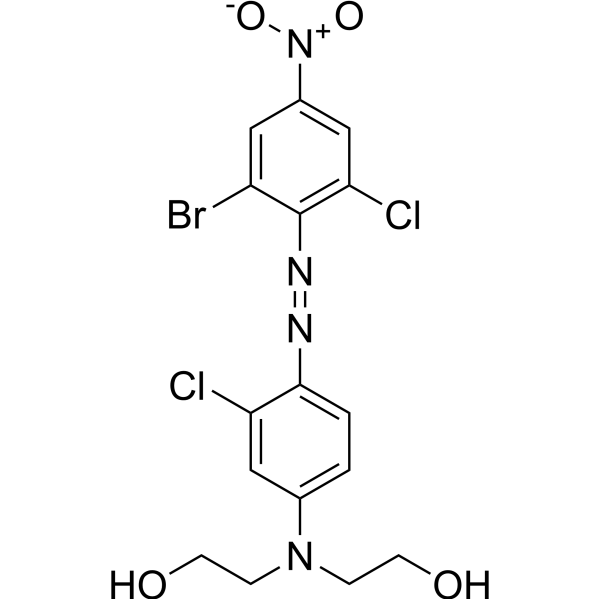
-
- HY-D0389
-
|
Echt brown M; AB14
|
Fluorescent Dye
|
|
|
Acid Brown 14 is a brown dye whose staining effects can be removed by the electrocoagulation (EC) process.
|
-

-
- HY-D0495
-
|
|
Fluorescent Dye
|
|
|
C.I. Acid brown 83 is an acidic brown dye that can be adsorbed and removed by bentone clay.
|
-
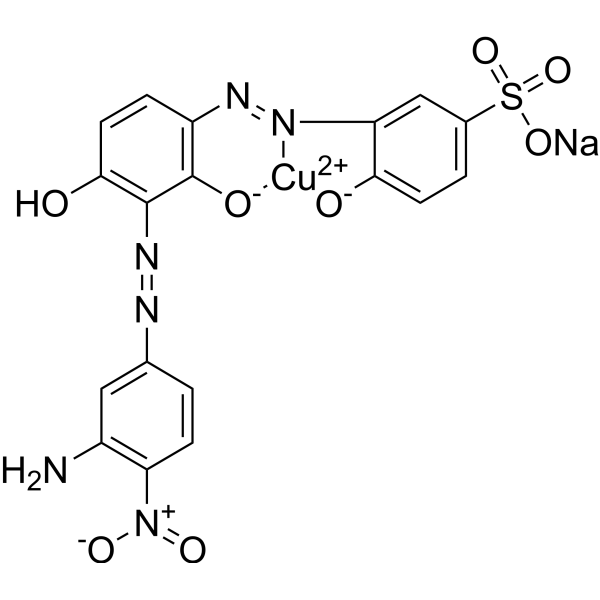
-
- HY-D0452
-
|
|
Fluorescent Dye
|
|
|
C.I. Acid brown 75 is an acidic brown dye that can be adsorbed and removed by bentone clay.
|
-
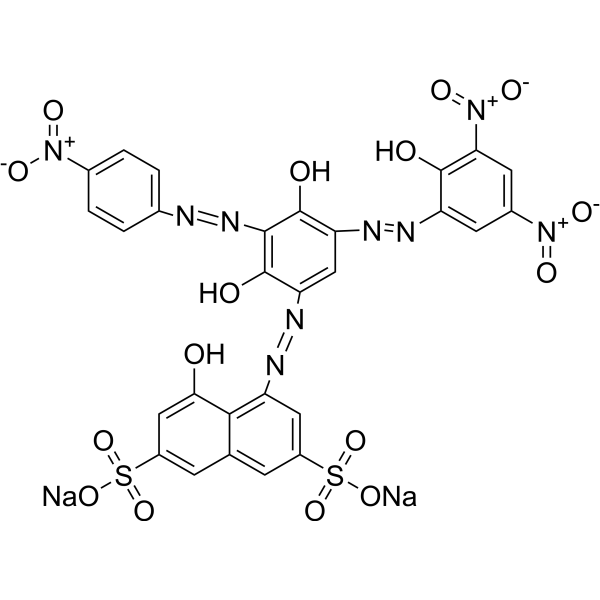
-
- HY-D0444
-
|
|
Fluorescent Dye
|
|
|
C.I. Acid brown 121 is an acidic brown dye that can be adsorbed and removed by bentone clay.
|
-
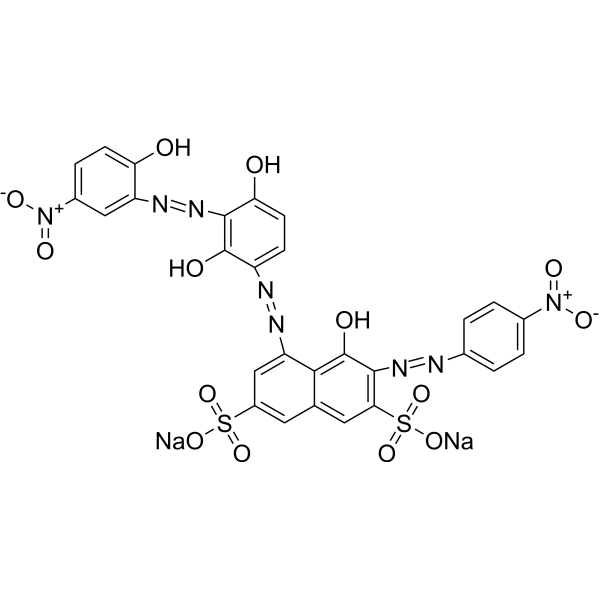
-
- HY-D0435
-
|
|
Fluorescent Dye
|
|
|
C.I. Acid brown 120 is an acidic brown dye that can be adsorbed and removed by bentone clay.
|
-

-
- HY-D0301
-
-
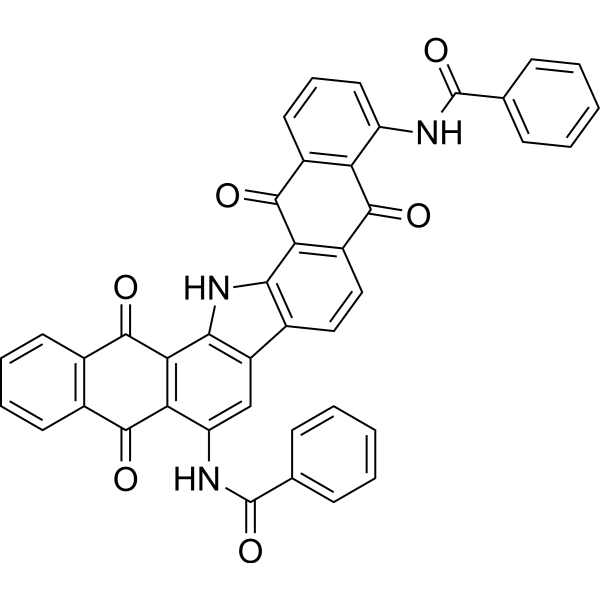
-
- HY-D0468
-
-
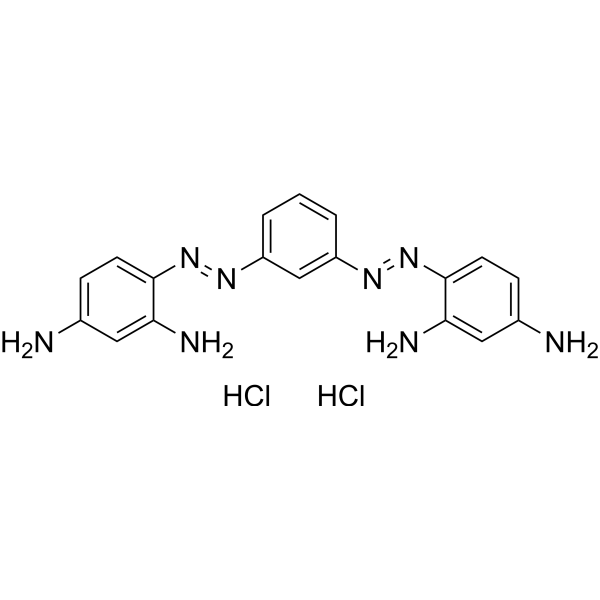
-
- HY-D1124
-
|
|
Fluorescent Dye
|
Others
|
|
Mordant brown 1, a naphthalenesulphonic acid derivative, is an azo dye. Mordant brown 1 is also an effective and specific inhibitor of CD40-CD154 costimulatory protein-protein interaction .
|
-
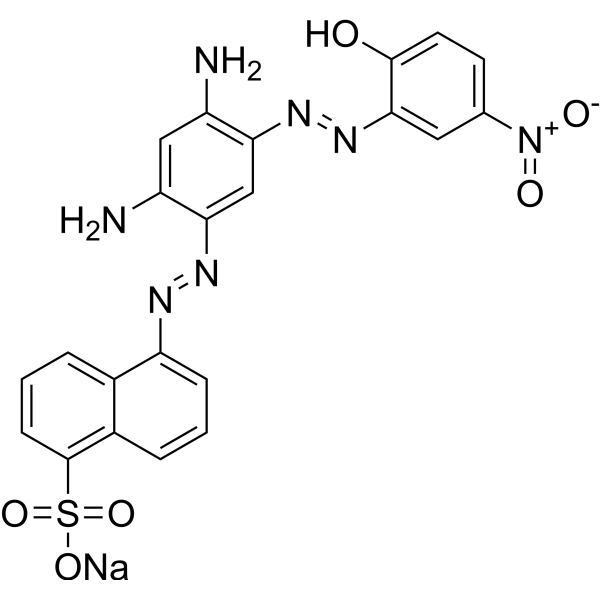
-
- HY-D0401
-
-
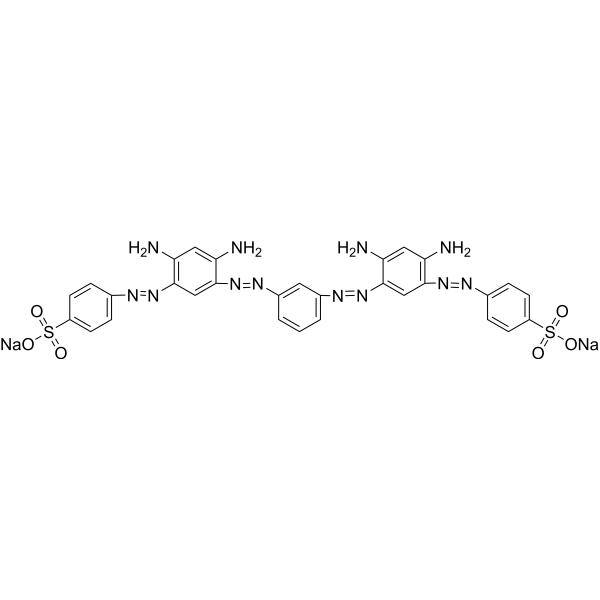
-
- HY-D0386
-
-
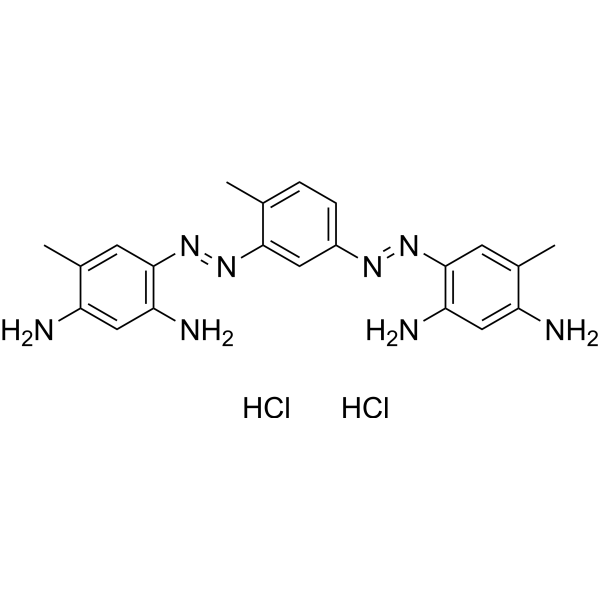
-
- HY-D0639
-
|
|
Fluorescent Dye
|
|
|
Reactive Brown 23 is common textile dyes that can be adsorbed onto single-walled carbon nanotubes (SWCNTs) through electrostatic interactions, allowing the separation of residual dyes.
|
-
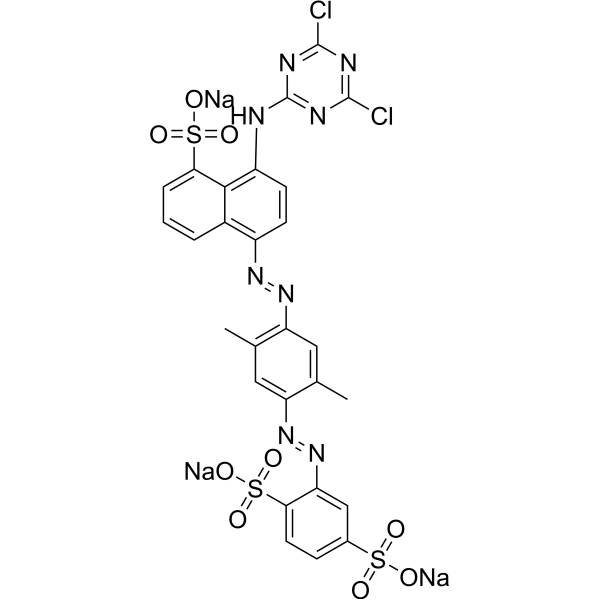
-
- HY-D1123
-
|
CI 70801
|
Fluorescent Dye
|
|
|
Indigosol brown IBR is a dye commonly used for dyeing textiles.
|
-
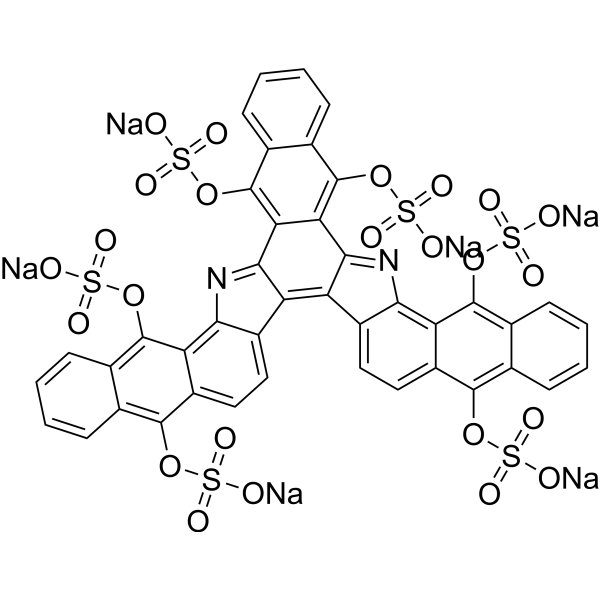
-
- HY-D0459
-
|
|
Fluorescent Dye
|
|
|
C.I. Pigment brown 25 is the most important colorant used to add color or change the color of something and is chemically essentially unaffected by the carrier or medium into which it is incorporated. It can be widely used in textile, medicine, food, cosmetics, plastics, paint, ink, photography and paper industries.
|
-
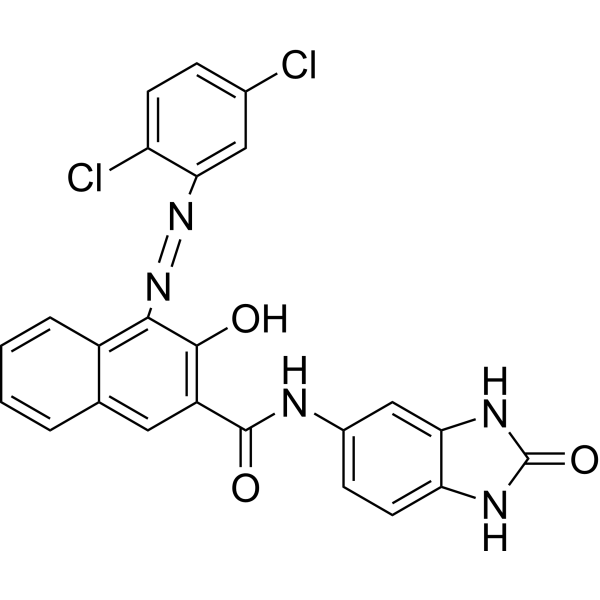
-
- HY-D0311
-
|
|
Fluorescent Dye
|
Others
|
|
Bismarck Brown Y is a multifunctional dye. Dyes are important tools in biological experiments. They can help researchers observe and analyze cell structures, track biomolecules, evaluate cell functions, distinguish cell types, detect biomolecules, study tissue pathology and monitor microorganisms. Their applications range from basic scientific research to clinical A wide range of diagnostics. Dyes are also widely used in traditional fields such as textile dyeing, as well as in emerging fields such as functional textile processing, food pigments and dye-sensitized solar cells.
|
-

-
- HY-D0373
-
|
|
Fluorescent Dye
|
Others
|
|
Indanthren Brown LMG is a multifunctional dye. Dyes are important tools in biological experiments. They can help researchers observe and analyze cell structures, track biomolecules, evaluate cell functions, distinguish cell types, detect biomolecules, study tissue pathology and monitor microorganisms. Their applications range from basic scientific research to clinical A wide range of diagnostics. Dyes are also widely used in traditional fields such as textile dyeing, as well as in emerging fields such as functional textile processing, food pigments and dye-sensitized solar cells.
|
-
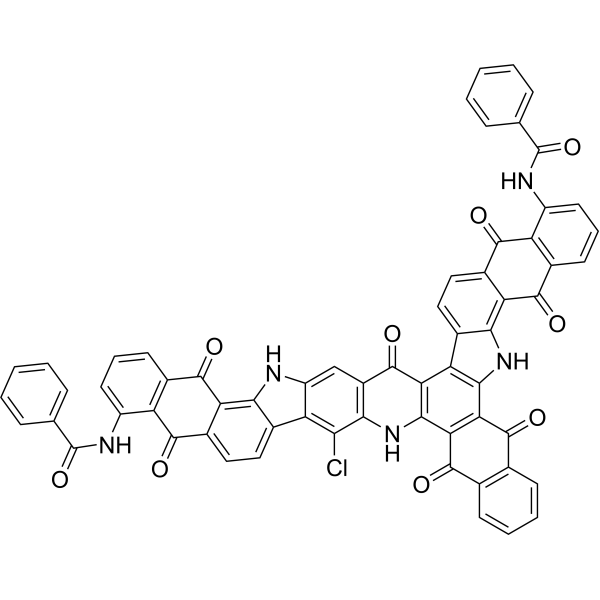
-
- HY-D0592
-
|
|
Fluorescent Dye
|
Others
|
|
Dispersol yellow brown XF is a multifunctional dye. Dyes are important tools in biological experiments. They can help researchers observe and analyze cell structures, track biomolecules, evaluate cell functions, distinguish cell types, detect biomolecules, study tissue pathology and monitor microorganisms. Their applications range from basic scientific research to clinical A wide range of diagnostics. Dyes are also widely used in traditional fields such as textile dyeing, as well as in emerging fields such as functional textile processing, food pigments and dye-sensitized solar cells.
|
-

-
- HY-N12515
-
|
|
Others
|
Metabolic Disease
|
|
Pinuseldarone (compound 1), extracted from Pinus eldarica needles regulats brown adipogenesis and thermogenesis .
|
-
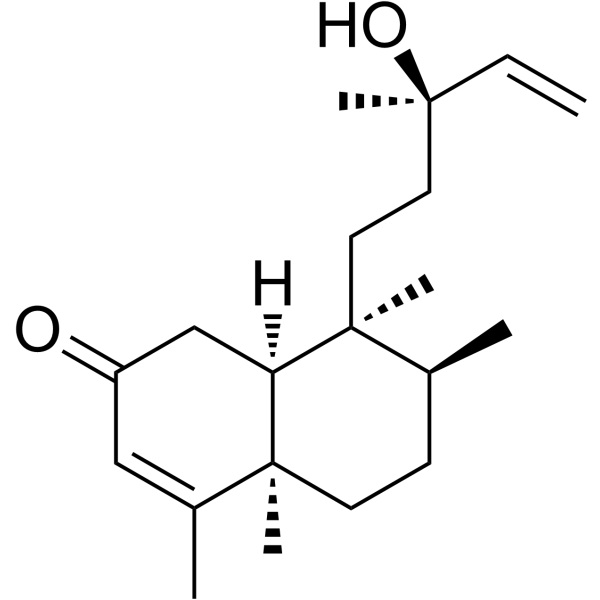
-
- HY-N9378
-
|
|
Fungal
|
Infection
|
|
3-Oxobetulin, an antifungal agent, shows antifungal activities against white rot fungus L. betulina and the brown rot fungus L. sulphureus .
|
-
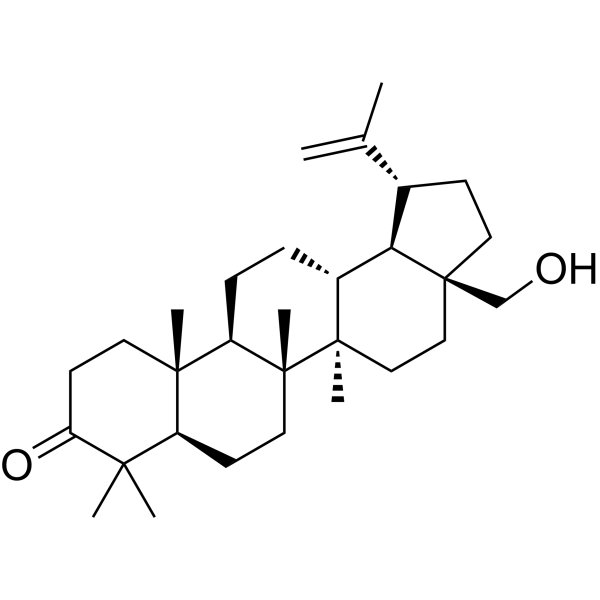
-
- HY-153812
-
|
AST070
|
Others
|
Metabolic Disease
|
|
AST 7062601 (AST070) is a Ucp1 inducer that strongly induces endogenous Ucp1 expression in primary mouse brown adipocytes. Ucp1 refers to uncoupling protein, found in brown and beige fat cells. In mammals, UCP1 oxidizes fatty acids and uncouples ATP production in mitochondria to promote energy dissipation as heat. AST 7062601 can be used to study thermogenic, uncoupled respiration .
|
-
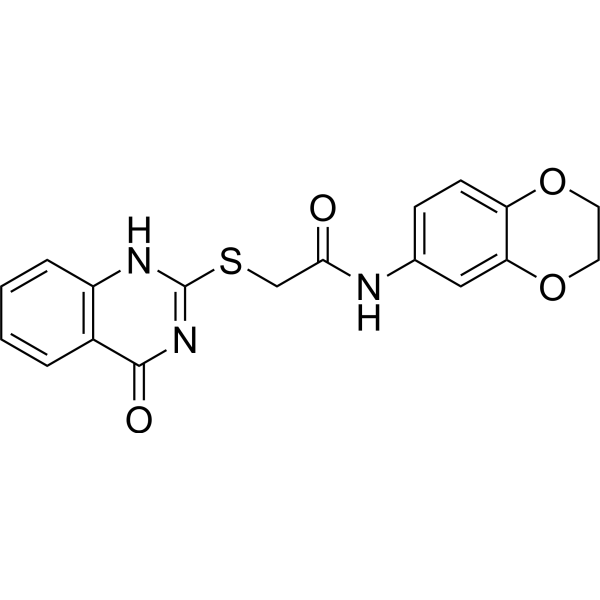
-
- HY-N7699
-
|
|
Others
|
Infection
|
|
D-Dimannuronic acid is an alginate extract from brown algae which can be used to synthesize sulfated polymannuronate (SPMG)-derived oligosaccharides .
|
-
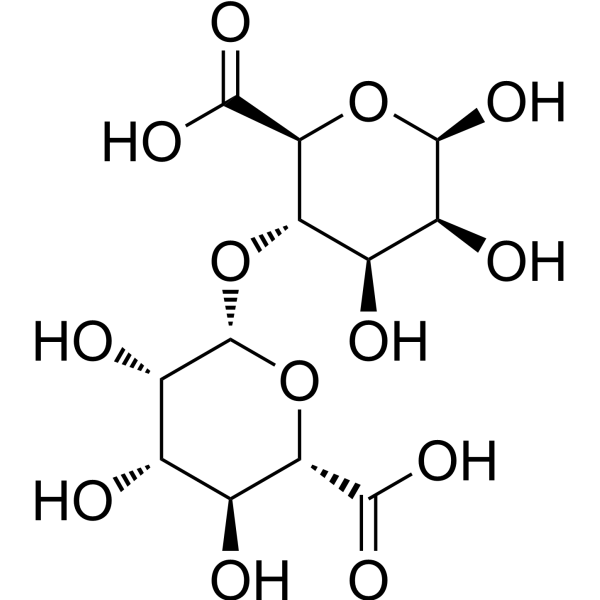
-
- HY-N7699H
-
|
|
Others
|
Infection
|
|
D-Dimannuronic acid is an alginate extract from brown algae which can be used to synthesize sulfated polymannuronate (SPMG)-derived oligosaccharides .
|
-
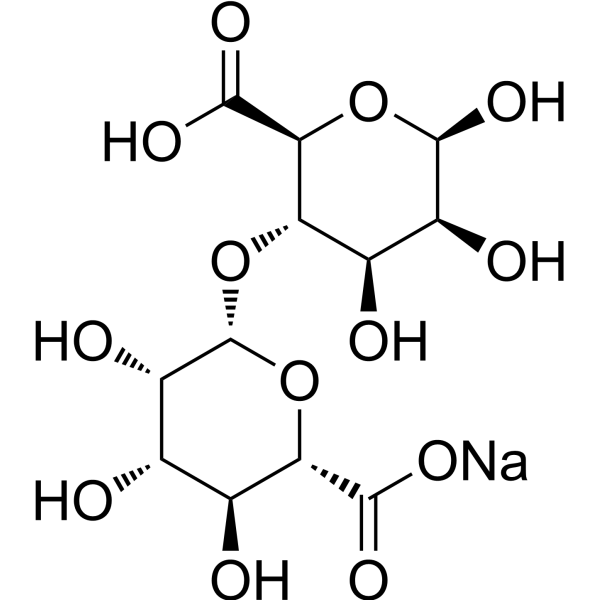
-
- HY-N7699B
-
|
|
Others
|
Neurological Disease
|
|
D-Tetramannuronic acid, an alginate oligomer, is produced by marine brown algae and by a limited range of Gram negative bacteria. D-Tetramannuronic acid can be used for the research of pain and vascular dementia .
|
-
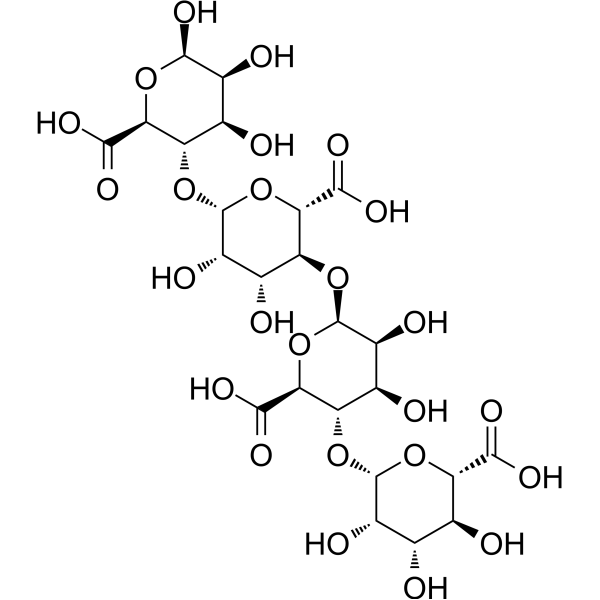
-
- HY-N7699C
-
|
|
Others
|
Neurological Disease
|
|
D-Pentamannuronic acid, an alginate oligomer, is produced by marine brown algae and by a limited range of Gram negative bacteria. D-Pentamannuronic acid can be used for the research of pain and vascular dementia .
|
-
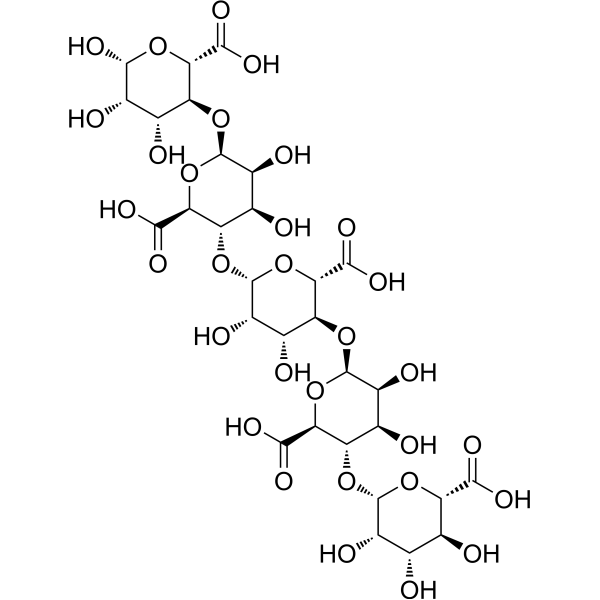
-
- HY-N7699D
-
|
|
Others
|
Neurological Disease
|
|
D-Hexamannuronic acid, an alginate oligomer, is produced by marine brown algae and by a limited range of Gram negative bacteria. D-Hexamannuronic acid can be used for the research of pain and vascular dementia .
|
-
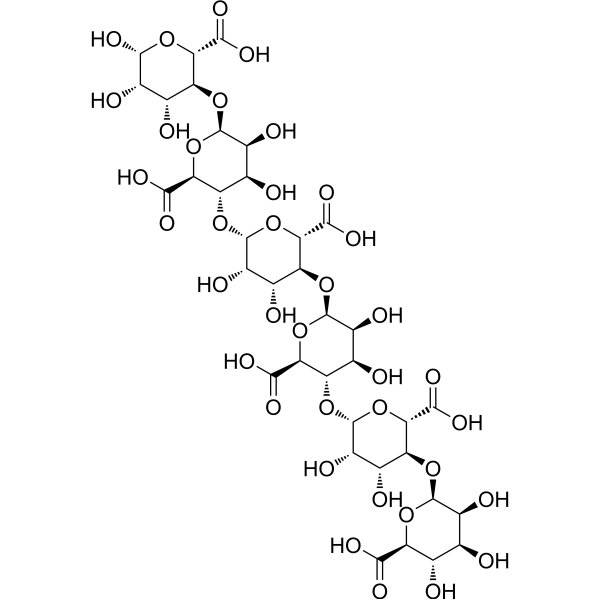
-
- HY-N7699E
-
|
|
Others
|
Neurological Disease
|
|
D-Heptamannuronic acid, an alginate oligomer, is produced by marine brown algae and by a limited range of Gram negative bacteria. D-Heptamannuronic acid can be used for the research of pain and vascular dementia .
|
-
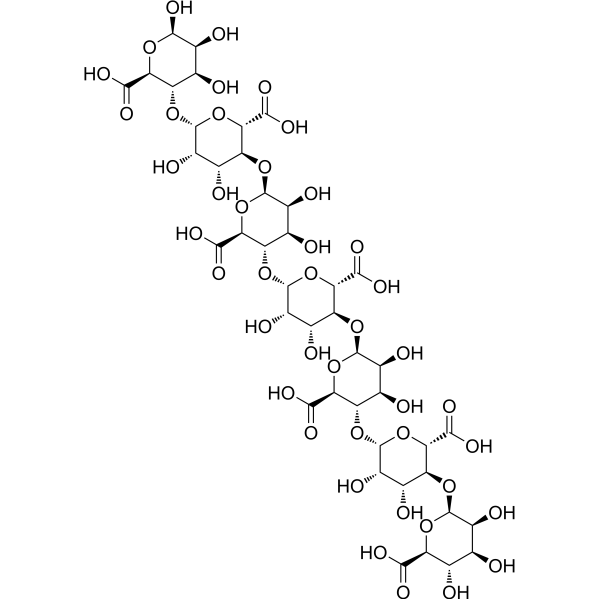
-
- HY-N7699F
-
|
|
Others
|
Neurological Disease
|
|
D-Octamannuronic acid, an alginate oligomer, is produced by marine brown algae and by a limited range of Gram negative bacteria. D-Octamannuronic acid can be used for the research of pain and vascular dementia .
|
-
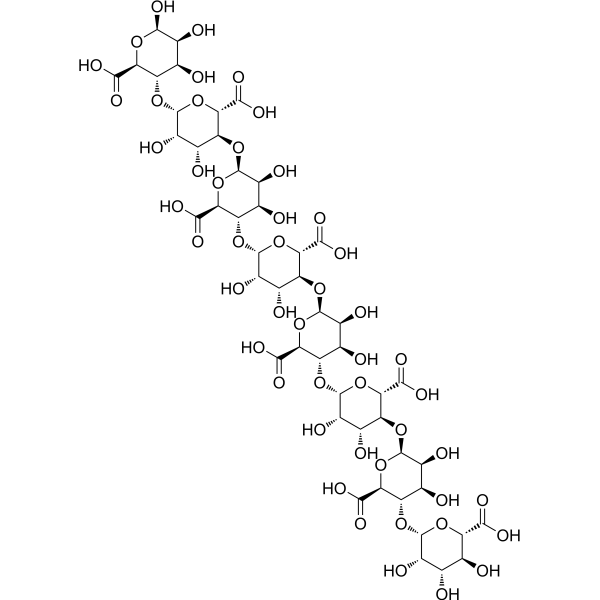
-
- HY-N7699G
-
|
|
Others
|
Neurological Disease
|
|
D-Nonamannuronic acid, an alginate oligomer, is produced by marine brown algae and by a limited range of Gram negative bacteria. D-Nonamannuronic acid can be used for the research of pain and vascular dementia .
|
-
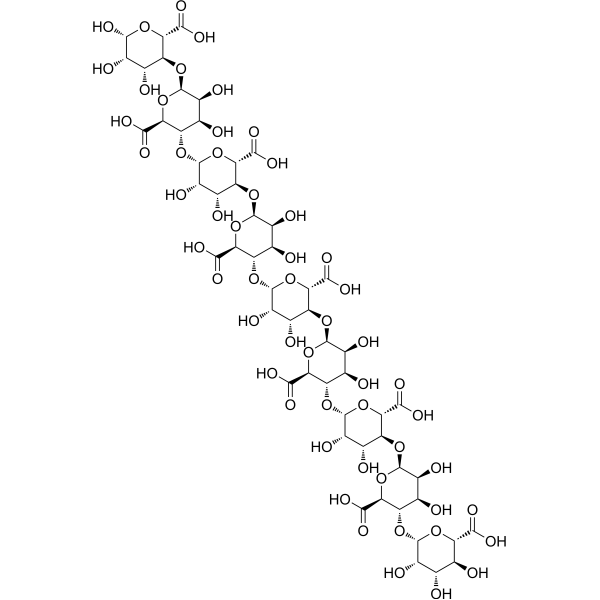
-
- HY-143450
-
|
|
Tyrosinase
|
Others
|
|
Tyrosinase-IN-3 (compound 54) is a potent inhibitor of tyrosinase. Tyrosinase is a copper-containing metalloenzyme that is responsible for the rate-limiting catalytic step in the melanin biosynthesis and enzymatic browning. Tyrosinase-IN-3 has the potential for the research of skin whitening agents and food preservatives .
|
-
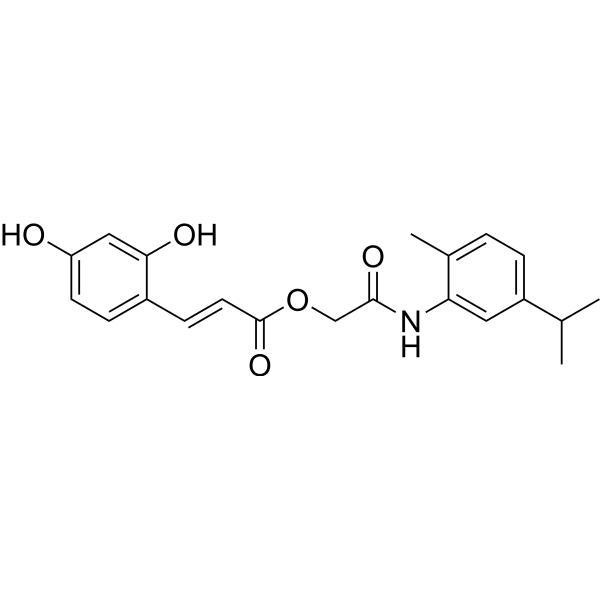
-
- HY-143451
-
|
|
Tyrosinase
|
Others
|
|
Tyrosinase-IN-4 (compound 34) is a potent inhibitor of tyrosinase. Tyrosinase is a copper-containing metalloenzyme that is responsible for the rate-limiting catalytic step in the melanin biosynthesis and enzymatic browning. Tyrosinase-IN-4 has the potential for the research of skin whitening agents and food preservatives .
|
-
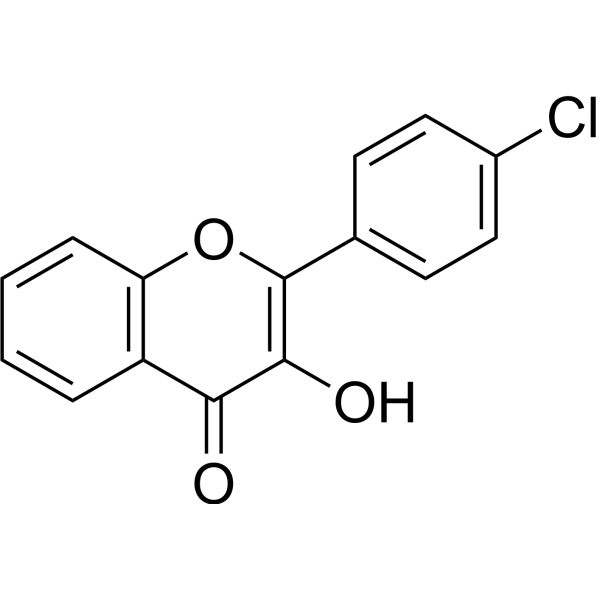
-
- HY-143448
-
|
|
Tyrosinase
|
Others
|
|
Tyrosinase-IN-1 (compound 90) is a potent inhibitor of tyrosinase. Tyrosinase is a copper-containing metalloenzyme that is responsible for the rate-limiting catalytic step in the melanin biosynthesis and enzymatic browning. Tyrosinase-IN-1 has the potential for the research of skin whitening agents and food preservatives .
|
-
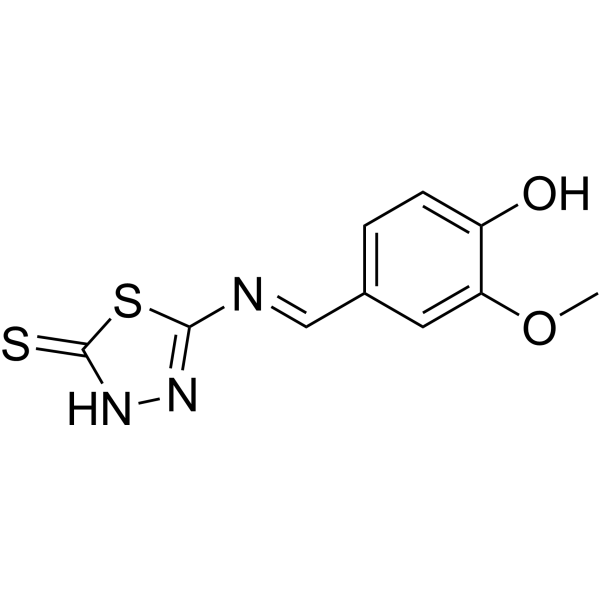
-
- HY-143449
-
|
|
Tyrosinase
|
Others
|
|
Tyrosinase-IN-2 (compound 67) is a potent inhibitor of tyrosinase. Tyrosinase is a copper-containing metalloenzyme that is responsible for the rate-limiting catalytic step in the melanin biosynthesis and enzymatic browning. Tyrosinase-IN-2 has the potential for the research of skin whitening agents and food preservatives .
|
-
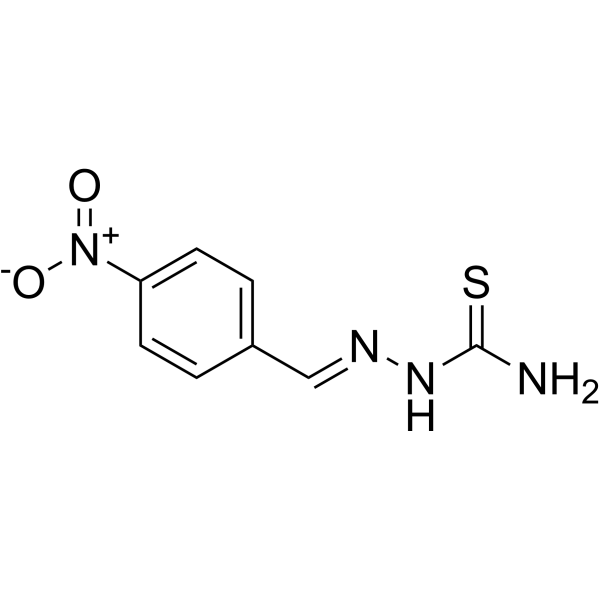
-
- HY-W112021
-
|
2,5-Dimethoxybenzoquinone
|
Others
|
Others
|
|
2,5-DMBQ (2,5-Dimethoxybenzoquinone) serves as an extracellular reductant. 2,5-DMBQ is involved in a crucial redox cycle, namely the extracellular hydroquinone-quinone redox cycle. In this cycle, 2,5-DMBQ is capable of reducing extracellular Fe ³⁺ and generating H2O2. 2,5-DMBQ plays a pivotal role in the biodegradation mechanism of brown rot fungal, assisting the fungi in decomposing and utilizing organic matter .
|
-
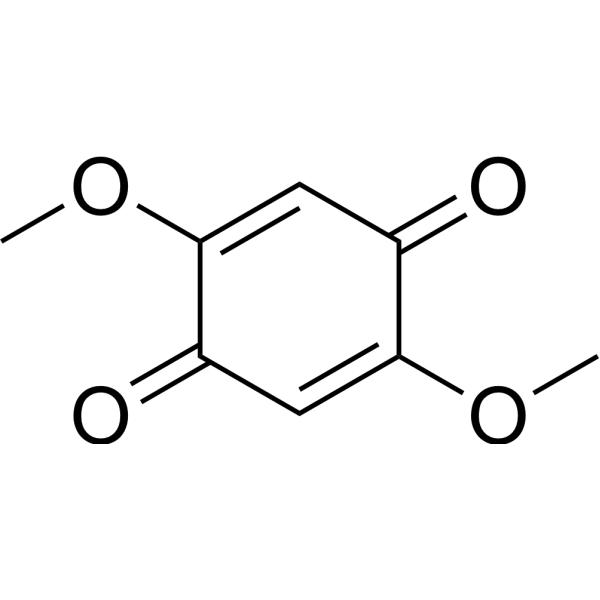
-
- HY-111604
-
|
|
Others
|
Cancer
|
|
Turbinaric acid is a cytotoxic secosqualene carboxylic acid from the brown alga Turbinaria ornata.
|
-
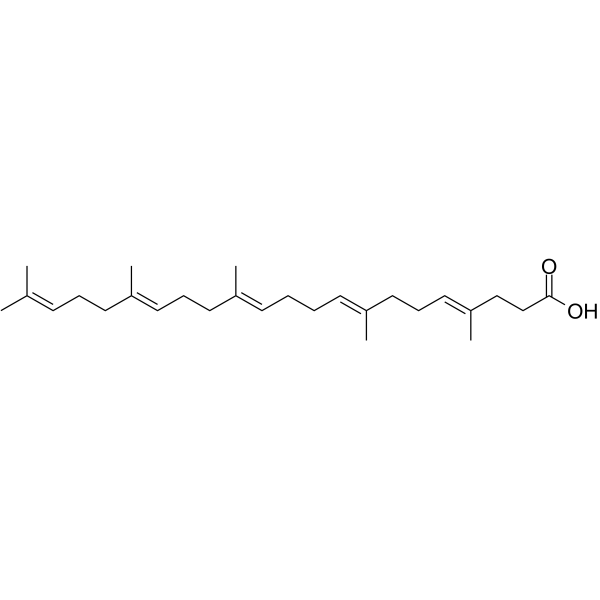
-
- HY-129137
-
|
Cy 3-soph
|
Others
|
Others
|
|
Cyanidin 3-sophoroside chloride is a potent non-competitive reversible polyphenol oxidase (PPO) inhibitor. Also, Cyanidin 3-sophoroside chloride can be used as an anti-browning agent to inhibit the degree of PPO browning, enhance the antioxidant damage capacity of fruits and prolong the storage period .
|
-

-
- HY-155247
-
|
|
Tyrosinase
|
Others
|
|
Tyrosinase-IN-14 (compound 7m) is a tyrosinase inhibitor that reduces the catalytic activity of tyrosinase by changing its secondary structure. Tyrosinase-IN-14 has low cytotoxicity and anti-browning activity in fruits. Tyrosinase-IN-14 effectively inhibits banana browning during storage .
|
-

-
- HY-153813
-
|
|
p38 MAPK
Mitochondrial Metabolism
|
Others
|
|
Z16078526 induces endogenous Ucp1 expression, promotes p38 MAPK phosphorylation and lipolysis in primary mouse brown adipocytes. Z16078526 activates thermogenic gene expression and mitochondrial activity (uncoupled respiration) in mouse brown adipocytes. Z16078526 also stimulates thermogenesis in the mouse .
|
-
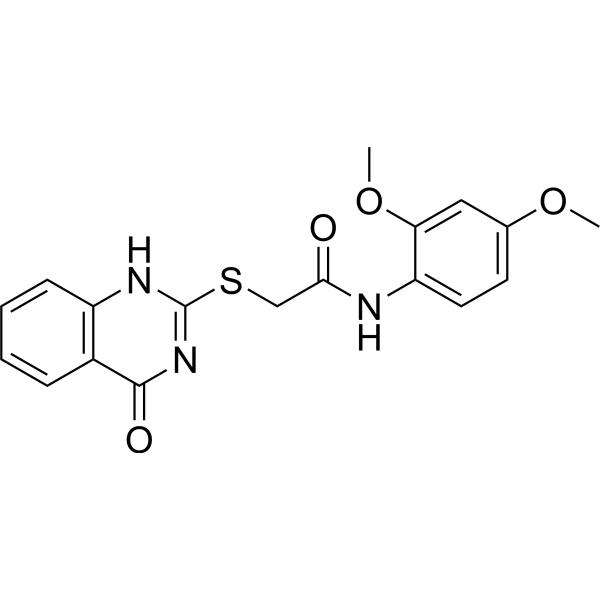
-
- HY-N3733
-
|
|
Fungal
|
Infection
Cancer
|
|
Deoxylapachol is a major cytotoxic component of New Zealand brown alga, Landsburgia quercifolia. Deoxylapachol has antifungal and anti-cancer activity .
|
-
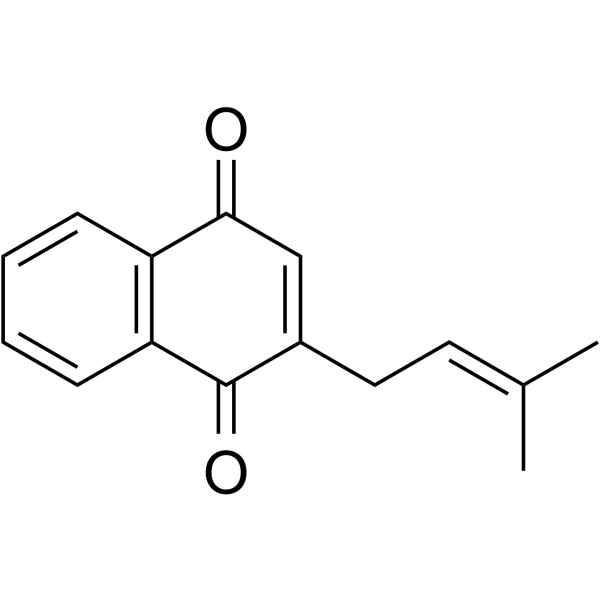
-
- HY-W012974
-
-
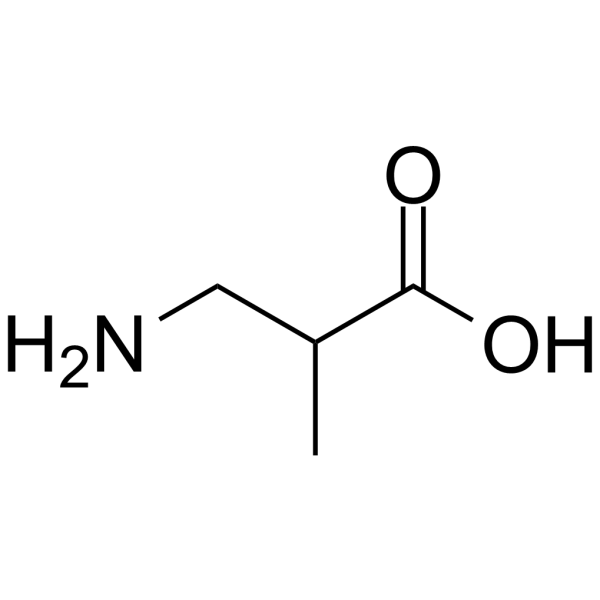
-
- HY-W038985
-
|
|
Others
|
Metabolic Disease
|
|
1,3-Oxazolidine-2-thione, a free oxazolidinethione, increases thyroid size and severely depresses hepatic trimethylamine oxidase activity in the brown-egg layers .
|
-
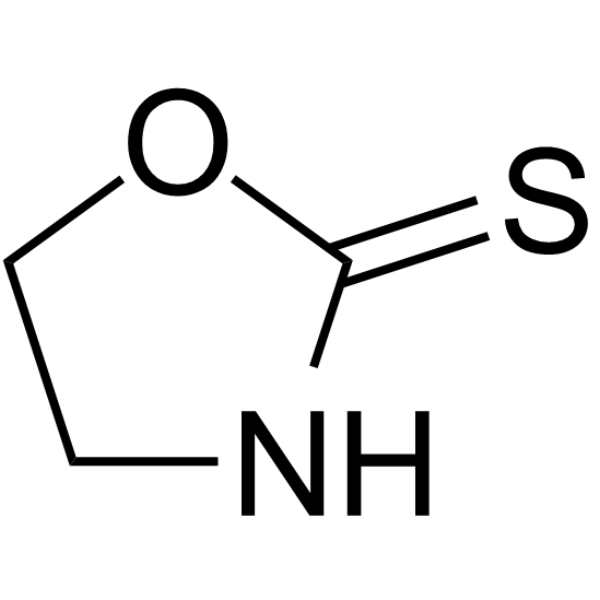
-
- HY-147059
-
-
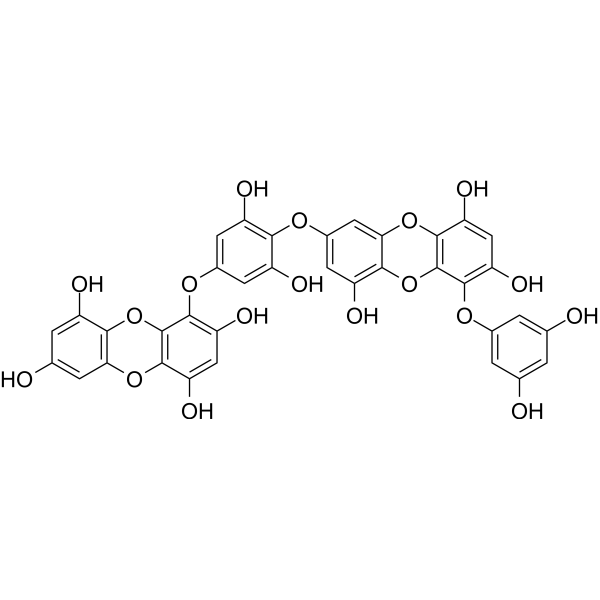
-
- HY-148973
-
|
|
ATP Synthase
|
Metabolic Disease
|
|
ZW290 is a compound to activate brown adipose tissue (BAT) thermogenic function. ZW290 increases the expression of uncoupling Protein 1 (UCP1) protein and inhibits ATP synthesis in BAT .
|
-
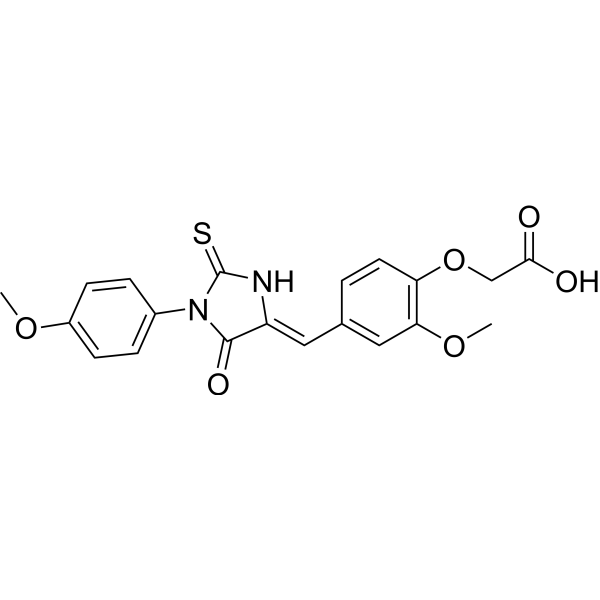
-
- HY-N0593S1
-
-
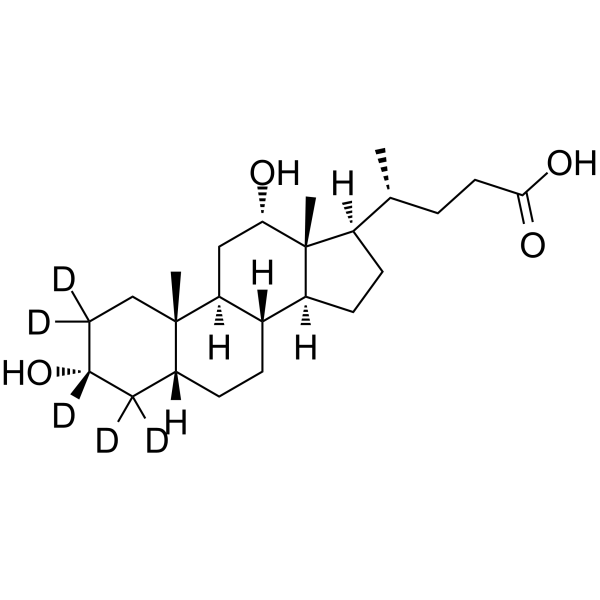
-
- HY-N0593S2
-
-

-
- HY-N0593S
-
-
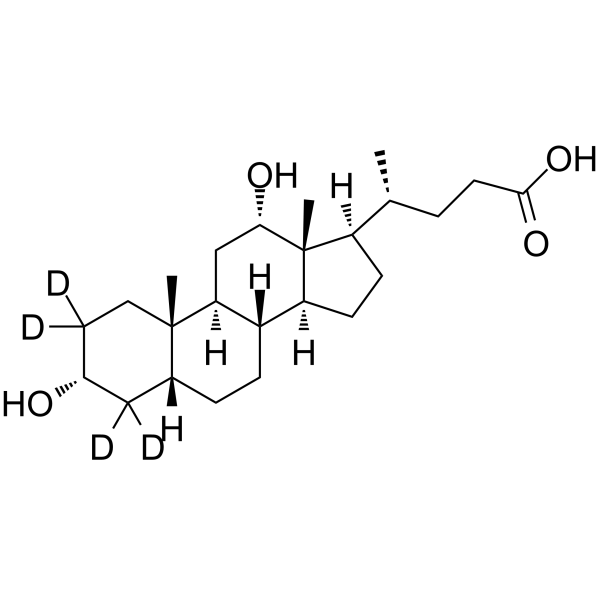
- HY-N0593S3
-
-

- HY-N12179
-
|
|
Bacterial
|
Others
|
|
Brevianamide M (compound 4) is a metabolite of Aspergillus versicolor. This is an endophytic fungus isolated from the marine brown alga Sargassum. Brevianamide M has antimicrobial activity against Escherichia coli and Staphylococcus aureus .
|
-
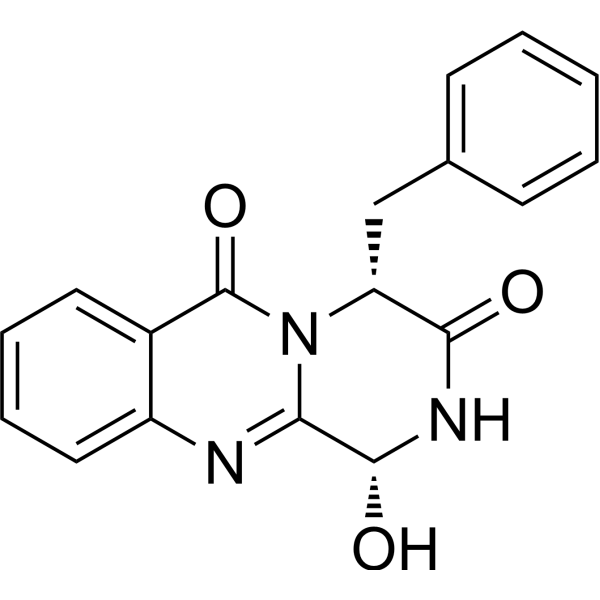
- HY-Y1310
-
|
|
Biochemical Assay Reagents
|
Others
|
|
Sodium alginate is the sodium salt of alginic acid. Sodium alginate can be extracted and purified from brown seaweed Laminaria japonica. Sodium alginate can be used in food additives and pharmaceuticals, adsorb heavy metal ions, and has mucosal-protective and hemostatic effects .
|
-

- HY-W088037
-
|
|
Others
|
Others
|
|
Tridecane is a short chain aliphatic hydrocarbon containing 13 carbon atoms. Tridecane is an volatile oil component isolated from essential oil of Piper aduncum L. Tridecane is a stress compound released by the brown marmorated stink bugs stress compound .
|
-
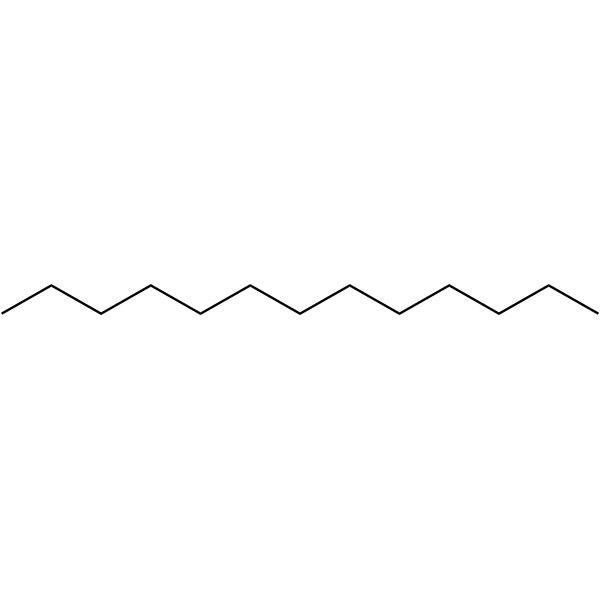
- HY-W012956
-
|
|
Others
|
Others
|
|
2-Acetylpyrrole is a product of model browning systems, and has been isolated as a major flavour component of many foods . 2-Acetylpyrrole has been used in the synthesis of 2-acetyl-1-pyrroline .
|
-
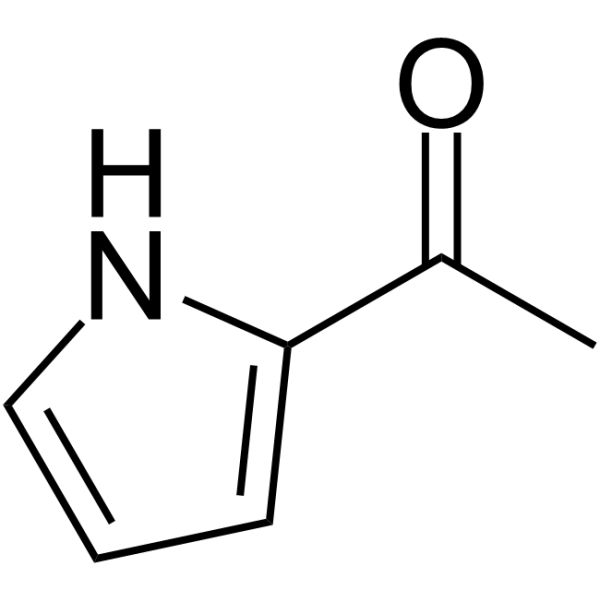
- HY-N0378
-
|
Mannitol; Mannite
|
Endogenous Metabolite
Apoptosis
Adrenergic Receptor
PGC-1α
PKA
|
Metabolic Disease
Cancer
|
|
D-Mannitol (Mannitol) is an oral, resistant sugar widely used in the food and pharmaceutical industries to promote the absorption and retention of calcium and magnesium through cecal fermentation, while acting as a osmotic diuretic to reduce tissue edema. D-Mannitol can enhance brown fat formation, improve insulin effect, reduce blood sugar levels, And through the start the β3-adrenergic receptor (β3-AR), PGC1α and PKA induced by means of white fat cells into brown fat cells .
|
-

- HY-W088037S
-
|
|
Isotope-Labeled Compounds
|
Others
|
|
Tridecane-d28 is the deuterium labeled Tridecane[1]. Tridecane is a short chain aliphatic hydrocarbon containing 13 carbon atoms. Tridecane is an volatile oil component isolated from essential oil of Piper aduncum L. Tridecane is a stress compound released by the brown marmorated stink bugs stress compound[2][3].
|
-
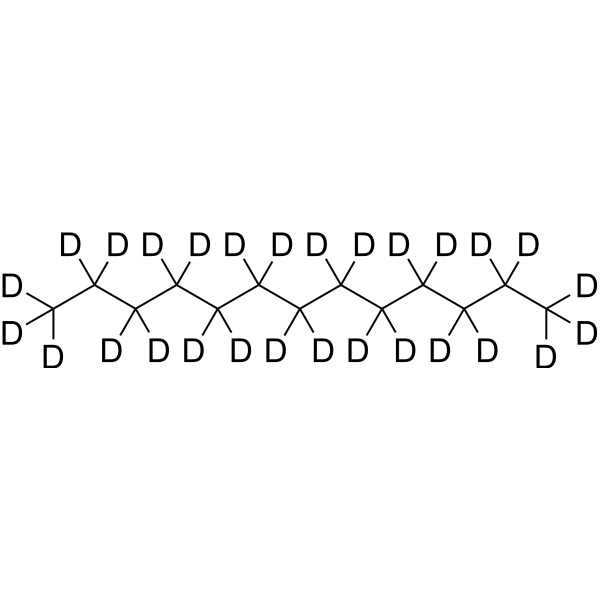
- HY-162302
-
|
|
Others
|
Metabolic Disease
|
|
NMY1009 is a lipophilic C8-hydrocarbon chain conjugated analog that links mitochondrial uncouplers via ether linkages. NMY1009 can be released and enter the mitochondrial matrix and intermembrane space, thereby targeting mitochondrial uncoupler to adipose tissue and increasing energy expenditure in brown and white adipose tissue .
|
-

- HY-P10252
-
|
|
HIV
|
Inflammation/Immunology
|
|
HIV gp120 421-438 is HIV antigen fragments, that conjugates with keyhole limpet hemocyanin (KLH) and generates specific anti-HIV antibody .
|
-
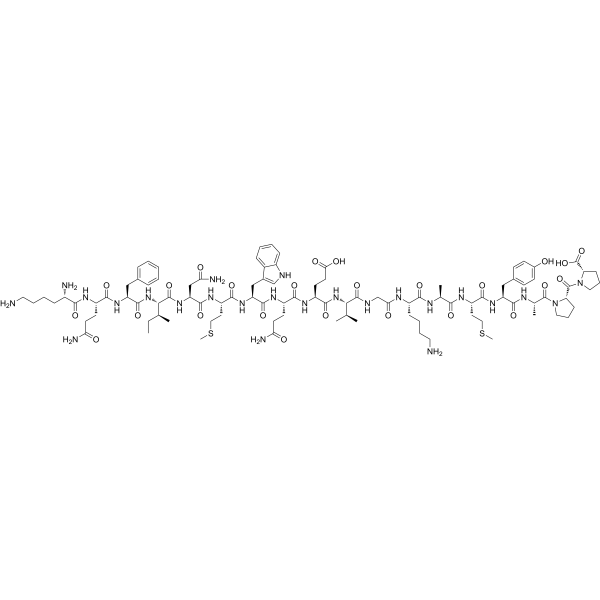
- HY-W127709
-
|
|
Biochemical Assay Reagents
|
Others
|
|
Chlorophyll b is decomposed by chlorophyllase to form pheophytin b. This causes its color to change from green to olive brown. It is involved in the harvesting of light energy and its subsequent conversion into chemical energy during photosynthesis. Along with chlorophyll a, it plays a key role in the ability of plants to adapt to varying light intensities. The visible spectrum that is not absorbed when only chlorophyll a is present in the LHC.
|
-

- HY-W012974S
-
|
|
Endogenous Metabolite
|
|
|
3-Amino-2-methylpropanoic acid-d3 is the deuterium labeled 3-Amino-2-methylpropanoic acid[1]. 3-Amino-2-methylpropanoic acid could induce browning of white fat and hepatic β-oxidation and is inversely correlated with cardiometabolic risk factors[2].
|
-

- HY-116003
-
|
|
Endogenous Metabolite
|
Metabolic Disease
|
|
12,13-DiHOME is a stimulator of Brown adipose tissue (BAT), as well as a thermogenic lipokine that activates BAT in response to cold. (±)12,13-DiHOME activates BAT fuel uptake and enhances cold tolerance, via promoting the translocation of the FA transporters FATP1 and CD36 to the cell membrane. (±)12,13-DiHOME can be used for research of metabolic disorders .
|
-
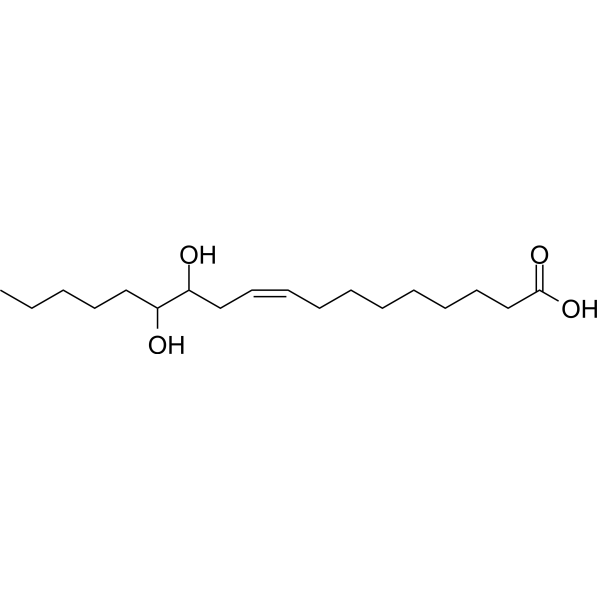
- HY-N0236
-
Corylin
4 Publications Verification
|
Antibiotic
STAT
|
Infection
Metabolic Disease
Cancer
|
|
Corylin is an orally active flavonoid anti-inflammatory and osteogenic agent that inhibits IL-6-induced STAT3 promoter activity and STAT3 phosphorylation. Corylin also has anticancer, antiatherosclerotic, and ameliorating activity in hyperlipidemia and insulin resistance, inducing adipocyte browning and lipolysis through SIRT1 or β3-AR-dependent pathways .
|
-
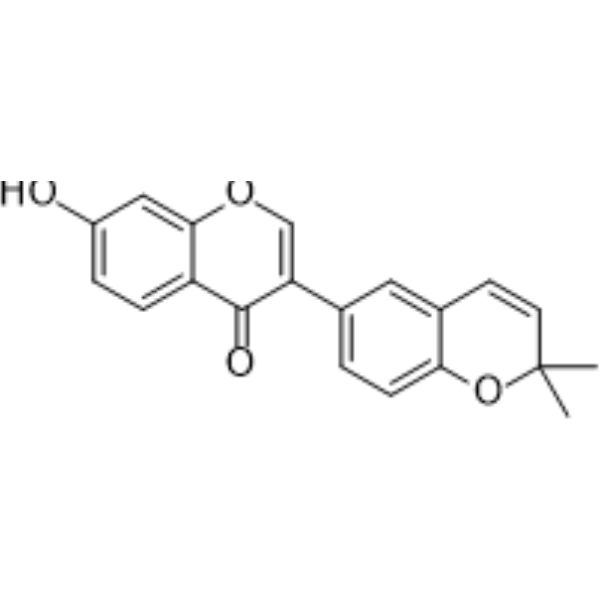
- HY-W017212
-
|
Methyl 3-phenylpropenoate
|
Tyrosinase
Bacterial
AMPK
|
Infection
Metabolic Disease
|
|
Methyl cinnamate (Methyl 3-phenylpropenoate), an active component of Zanthoxylum armatum, is a widely used natural flavor compound. Methyl cinnamate (Methyl 3-phenylpropenoate) possesses antimicrobial activity and is a tyrosinase inhibitor that can prevent food browning. Methyl cinnamate (Methyl 3-phenylpropenoate) has antiadipogenic activity through mechanisms mediated, in part, by the CaMKK2-AMPK signaling pathway .
|
-
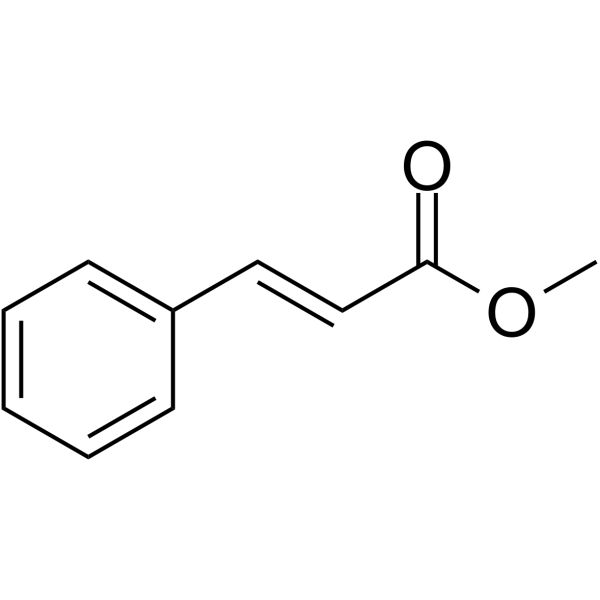
- HY-158235
-
|
|
Tyrosinase
|
Others
|
|
Tyrosinase-IN-27 (compound 6f) is a tyrosinase (TYR) inhibitor (IC50: 0.88 μM) that statically quenches TYR. Tyrosinase-IN-27 increases the hydrophobicity of the enzyme microenvironment by binding to TYR, reducing the content of α-helices in the enzyme and changing its secondary structure. Tyrosinase-IN-27 can be used in the food industry to effectively inhibit the browning of lotus root slices. .
|
-

- HY-116771A
-
CL 316243
Maximum Cited Publications
6 Publications Verification
|
Adrenergic Receptor
|
Metabolic Disease
|
|
CL316243 is a highly potent selective β3-adrenoceptor agonist with a EC50 of 3 nM, but is an extremely poor to β1/2- receptors .CL316243 is a effective stimulant of adipocyte lipolysis and increases brown adipose tissue thermogenesis and metabolic rate . CL316243 has the potential for the treatment obesity, diabetes and urge urinary incontinence .
|
-
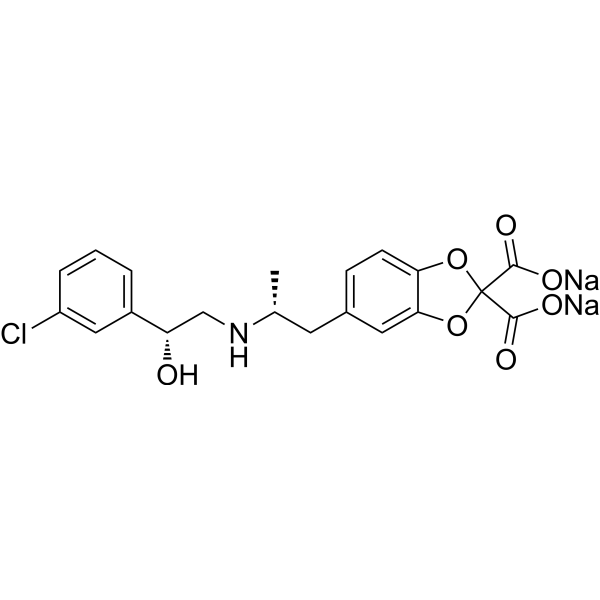
- HY-N11526
-
|
|
Others
|
Inflammation/Immunology
|
|
3-Hydroxy-2-(palmitoyloxy)propyl stearat is a non-volatile compound. 3-Hydroxy-2-(palmitoyloxy)propyl stearat can be isolated from less polar fractions of the brown macroalga Fucus virsoides J. Agardh. This part of the substance has a good ability to scavenge free radicals and has a protective effect on the oxidative stress induced by hydrogen peroxide in zebrafish embryos .
|
-
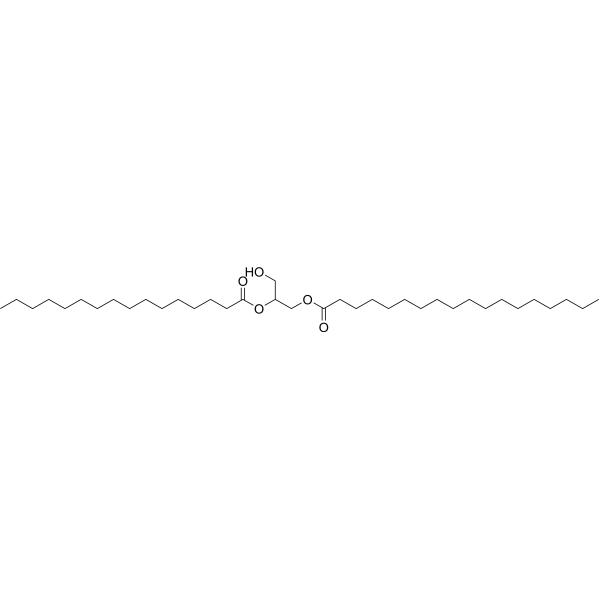
- HY-N8016S2
-
|
|
Isotope-Labeled Compounds
|
|
|
Nonanal-d2 is deuterated labeled Methyl cinnamate (HY-W017212). Methyl cinnamate (Methyl 3-phenylpropenoate), an active component of Zanthoxylum armatum, is a widely used natural flavor compound. Methyl cinnamate (Methyl 3-phenylpropenoate) possesses antimicrobial activity and is a tyrosinase inhibitor that can prevent food browning. Methyl cinnamate (Methyl 3-phenylpropenoate) has antiadipogenic activity through mechanisms mediated, in part, by the CaMKK2-AMPK signaling pathway .
|
-

- HY-131616
-
|
|
Others
|
Inflammation/Immunology
|
|
Ethyl α-eleostearate is isolated from the ethanolic extract of Pseudo-nitzschia australis (PAEE). The PAEE of Pseudomonas australis has anti-neuroinflammatory effects, inhibiting intracellular ROS as well as pro-inflammatory mediators and cytokines .
|
-
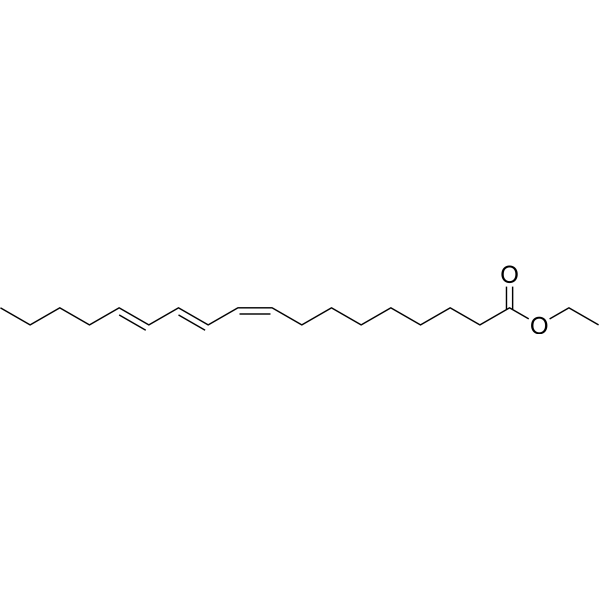
- HY-149404
-
|
|
Reactive Oxygen Species
Tyrosinase
|
Others
|
|
Non-competitive tyrosinase inhibitor (Tyrosinase-IN-12) is a potent, non-competitive tyrosinase inhibitor with an IC50 value of 49.33 ± 2.64 µM and Ki value of 31.25 ± 0.25 µM. Non-competitive tyrosinase inhibitor (Tyrosinase-IN-12) have the highest radical scavenging activity to reduce the production of reactive oxygen species (ROS) with an IC50 value of 25.39 ± 0.77 µM. Non-competitive tyrosinase inhibitor (Tyrosinase-IN-12) can be used for anti-browning substances in the food and agricultural sectors .
|
-
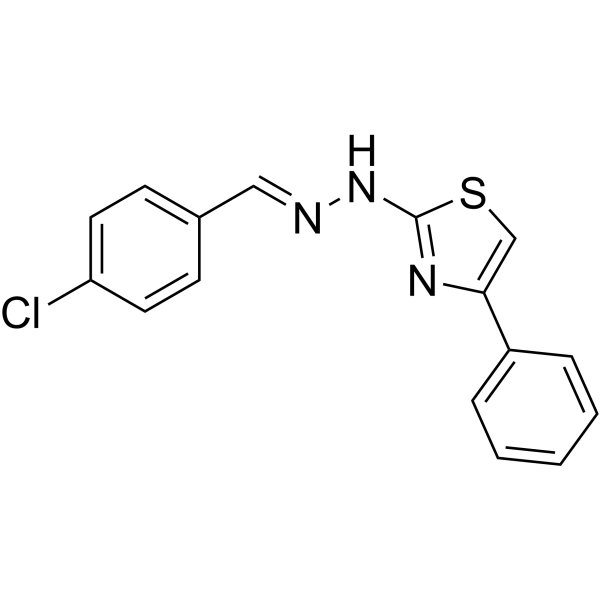
- HY-113120
-
|
6Z,9Z,12Z,15Z-Octadecatetraenoic acid
|
Endogenous Metabolite
|
Others
|
|
Stearidonic acid (6Z,9Z,12Z,15Z-Octadecatetraenoic acid) is an intermediate fatty acid in the biosynthetic pathway from α-linolenic acid to VLC ω-3 PUFA. The conversion efficiency of stearidonic acid is higher than that of alpha-linolenic acid. Increasing the intake of stearidonic acid can increase the content of eicosapentaenoic acid (EPA) in red blood cells. Stearidonic acid can also be isolated from methanolic extracts of the brown alga Brachyphyllum gracilis .
|
-

- HY-117661
-
|
|
SRPK
VEGFR
|
Cardiovascular Disease
Cancer
|
|
SPHINX31 is a potent and selective SRPK1 inhibitor, with an IC50 of 5.9 nM. SPHINX31 inhibits phosphorylation of serine/arginine-rich splicing factor 1 (SRSF1). SPHINX31 also decreases the mRNA expression of pro-angiogenic VEGF-A165a isoform. SPHINX31 can be used to research neovascular eye disease .
|
-

- HY-110161
-
|
|
Somatostatin Receptor
|
Cardiovascular Disease
Endocrinology
|
|
sst2 Receptor agonist-1 is a potent somatostatin receptor subtype 2 (sst2) agonist with a Ki value of 0.025 nM and a cAMP IC50 value of 4.8 nM. sst2 Receptor agonist-1 can inhibit rat growth hormone (GH) secretion and ocular neovascular lesion formation. Antiangiogenic effect .
|
-

- HY-117239
-
|
|
Adrenergic Receptor
|
Cardiovascular Disease
|
|
SB-206606, a stereoisomer of BRL 37344, is a potentially specific, beta 3-adrenergic receptor (β3-AR) ligand. The affinity of [3H]SB 206606 is 76 times higher for the β3-AR than for the beta 1/beta 2-adrenergic receptors .
|
-

- HY-100072
-
|
Methyl (2E,4E,6Z)-decatrienoate
|
Others
|
Infection
|
|
(2E,4E,6Z)-Methyl deca-2,4,6-trienoate (Methyl (2E,4E,6Z)-decatrienoate) is the aggregation pheromone of the brown-winged green bug, Plautia stali. (2E,4E,6Z)-Methyl deca-2,4,6-trienoate exposed to daylight in solutions and/or on dispensers used for field trapping can readily isomerize to form complex mixtures of isomers, thus causing a concern about lure stability and longevity .
|
-
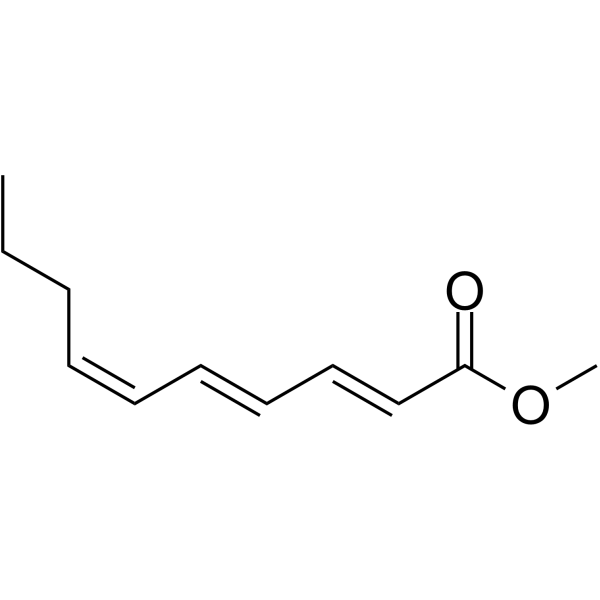
| Cat. No. |
Product Name |
Type |
-
- HY-D0326
-
|
|
Dyes
|
|
Vat Brown 1 is a brown dye.
|
-
- HY-D1203
-
|
|
Dyes
|
|
Acid Brown 4 is a brown dye whose staining effects can be removed by the electrocoagulation (EC) process.
|
-
- HY-D0659
-
|
|
Dyes
|
|
Acid brown 58 is a brown dye whose staining effects can be removed by the electrocoagulation (EC) process.
|
-
- HY-D0388
-
|
|
Dyes
|
|
Acid Brown 5 is a brown dye whose staining effects can be removed by the electrocoagulation (EC) process.
|
-
- HY-D0528
-
|
|
Dyes
|
|
Disperse brown 1 is a brown dye commonly used for fiber dyeing.
|
-
- HY-D0517
-
|
|
Dyes
|
|
Disperse brown 4 is a brown dye commonly used for fiber dyeing.
|
-
- HY-D0389
-
|
Echt brown M; AB14
|
Dyes
|
|
Acid Brown 14 is a brown dye whose staining effects can be removed by the electrocoagulation (EC) process.
|
-
- HY-D0495
-
|
|
Dyes
|
|
C.I. Acid brown 83 is an acidic brown dye that can be adsorbed and removed by bentone clay.
|
-
- HY-D0452
-
|
|
Dyes
|
|
C.I. Acid brown 75 is an acidic brown dye that can be adsorbed and removed by bentone clay.
|
-
- HY-D0444
-
|
|
Dyes
|
|
C.I. Acid brown 121 is an acidic brown dye that can be adsorbed and removed by bentone clay.
|
-
- HY-D0435
-
|
|
Dyes
|
|
C.I. Acid brown 120 is an acidic brown dye that can be adsorbed and removed by bentone clay.
|
-
- HY-D0301
-
|
|
Dyes
|
|
Vat-brown-3 is a brown dye.
|
-
- HY-D0468
-
|
|
Dyes
|
|
Basic Brown 1 is a diazo dyes .
|
-
- HY-D1124
-
|
|
Dyes
|
|
Mordant brown 1, a naphthalenesulphonic acid derivative, is an azo dye. Mordant brown 1 is also an effective and specific inhibitor of CD40-CD154 costimulatory protein-protein interaction .
|
-
- HY-D0401
-
|
|
Dyes
|
|
Direct brown 44 is a good dyeing agent for cotton fabrics.
|
-
- HY-D0386
-
|
|
Dyes
|
|
Bismarck Brown R is a basic dyes .
|
-
- HY-D0639
-
|
|
Dyes
|
|
Reactive Brown 23 is common textile dyes that can be adsorbed onto single-walled carbon nanotubes (SWCNTs) through electrostatic interactions, allowing the separation of residual dyes.
|
-
- HY-D1123
-
|
CI 70801
|
Dyes
|
|
Indigosol brown IBR is a dye commonly used for dyeing textiles.
|
-
- HY-D0459
-
|
|
Dyes
|
|
C.I. Pigment brown 25 is the most important colorant used to add color or change the color of something and is chemically essentially unaffected by the carrier or medium into which it is incorporated. It can be widely used in textile, medicine, food, cosmetics, plastics, paint, ink, photography and paper industries.
|
-
- HY-D0311
-
|
|
Dyes
|
|
Bismarck Brown Y is a multifunctional dye. Dyes are important tools in biological experiments. They can help researchers observe and analyze cell structures, track biomolecules, evaluate cell functions, distinguish cell types, detect biomolecules, study tissue pathology and monitor microorganisms. Their applications range from basic scientific research to clinical A wide range of diagnostics. Dyes are also widely used in traditional fields such as textile dyeing, as well as in emerging fields such as functional textile processing, food pigments and dye-sensitized solar cells.
|
-
- HY-D0373
-
|
|
Dyes
|
|
Indanthren Brown LMG is a multifunctional dye. Dyes are important tools in biological experiments. They can help researchers observe and analyze cell structures, track biomolecules, evaluate cell functions, distinguish cell types, detect biomolecules, study tissue pathology and monitor microorganisms. Their applications range from basic scientific research to clinical A wide range of diagnostics. Dyes are also widely used in traditional fields such as textile dyeing, as well as in emerging fields such as functional textile processing, food pigments and dye-sensitized solar cells.
|
-
- HY-D0592
-
|
|
Dyes
|
|
Dispersol yellow brown XF is a multifunctional dye. Dyes are important tools in biological experiments. They can help researchers observe and analyze cell structures, track biomolecules, evaluate cell functions, distinguish cell types, detect biomolecules, study tissue pathology and monitor microorganisms. Their applications range from basic scientific research to clinical A wide range of diagnostics. Dyes are also widely used in traditional fields such as textile dyeing, as well as in emerging fields such as functional textile processing, food pigments and dye-sensitized solar cells.
|
| Cat. No. |
Product Name |
Type |
-
- HY-W127709
-
|
|
Biochemical Assay Reagents
|
|
Chlorophyll b is decomposed by chlorophyllase to form pheophytin b. This causes its color to change from green to olive brown. It is involved in the harvesting of light energy and its subsequent conversion into chemical energy during photosynthesis. Along with chlorophyll a, it plays a key role in the ability of plants to adapt to varying light intensities. The visible spectrum that is not absorbed when only chlorophyll a is present in the LHC.
|
| Cat. No. |
Product Name |
Target |
Research Area |
-
- HY-P10252
-
|
|
HIV
|
Inflammation/Immunology
|
|
HIV gp120 421-438 is HIV antigen fragments, that conjugates with keyhole limpet hemocyanin (KLH) and generates specific anti-HIV antibody .
|
| Cat. No. |
Product Name |
Category |
Target |
Chemical Structure |
| Cat. No. |
Product Name |
Chemical Structure |
-
- HY-N0593S
-
|
|
|
Deoxycholic acid-d4 is the deuterium labeled Deoxycholic acid. Deoxycholic acid is specifically responsible for activating the G protein-coupled bile acid receptor TGR5 that stimulates brown adipose tissue (BAT) thermogenic activity.
|
-

-
- HY-N0593S3
-
|
|
|
Deoxycholic acid- 13C is the 13C-labeled Deoxycholic acid. Deoxycholic acid is specifically responsible for activating the G protein-coupled bile acid receptor TGR5 that stimulates brown adipose tissue (BAT) thermogenic activity.
|
-

-
- HY-N0593S1
-
|
|
|
Deoxycholic acid-d5 is the deuterium labeled Deoxycholic acid. Deoxycholic acid is specifically responsible for activating the G protein-coupled bile acid receptor TGR5 that stimulates brown adipose tissue (BAT) thermogenic activity.
|
-

-
- HY-N0593S2
-
|
|
|
Deoxycholic acid-d6 is the deuterium labeled Deoxycholic acid. Deoxycholic acid is specifically responsible for activating the G protein-coupled bile acid receptor TGR5 that stimulates brown adipose tissue (BAT) thermogenic activity.
|
-

-
- HY-W088037S
-
|
|
|
Tridecane-d28 is the deuterium labeled Tridecane[1]. Tridecane is a short chain aliphatic hydrocarbon containing 13 carbon atoms. Tridecane is an volatile oil component isolated from essential oil of Piper aduncum L. Tridecane is a stress compound released by the brown marmorated stink bugs stress compound[2][3].
|
-

-
- HY-W012974S
-
|
|
|
3-Amino-2-methylpropanoic acid-d3 is the deuterium labeled 3-Amino-2-methylpropanoic acid[1]. 3-Amino-2-methylpropanoic acid could induce browning of white fat and hepatic β-oxidation and is inversely correlated with cardiometabolic risk factors[2].
|
-

-
- HY-N8016S2
-
|
|
|
Nonanal-d2 is deuterated labeled Methyl cinnamate (HY-W017212). Methyl cinnamate (Methyl 3-phenylpropenoate), an active component of Zanthoxylum armatum, is a widely used natural flavor compound. Methyl cinnamate (Methyl 3-phenylpropenoate) possesses antimicrobial activity and is a tyrosinase inhibitor that can prevent food browning. Methyl cinnamate (Methyl 3-phenylpropenoate) has antiadipogenic activity through mechanisms mediated, in part, by the CaMKK2-AMPK signaling pathway .
|
-

| Cat. No. |
Product Name |
Application |
Reactivity |
-
- HY-P81170
-
|
Uncoupling Protein-1; UCP1; UCP 1; Mitochondrial brown fat uncoupling protein 1; mitochondrial brown fat uncoupling protein; SLC25A7; Thermogenin; UCP 1; UCP; Uncoupling protein 1; UCP1_HUMAN.
|
WB; ELISA; Flow-Cyt
|
Mouse(predicted: Human, Rat, Dog, Cow, Horse, Rabbit, Sheep) |
|
UCP-1 Antibody is an unconjugated, approximately 33 kDa, rabbit-derived, anti-UCP-1 polyclonal antibody. UCP-1 Antibody can be used for: WB, ELISA, Flow-Cyt expriments in mouse, and predicted: human, rat, dog, cow, horse, rabbit, sheep background without labeling.
|
Your information is safe with us. * Required Fields.
Inquiry Information
- Product Name:
- Cat. No.:
- Quantity:
- MCE Japan Authorized Agent:



















































































